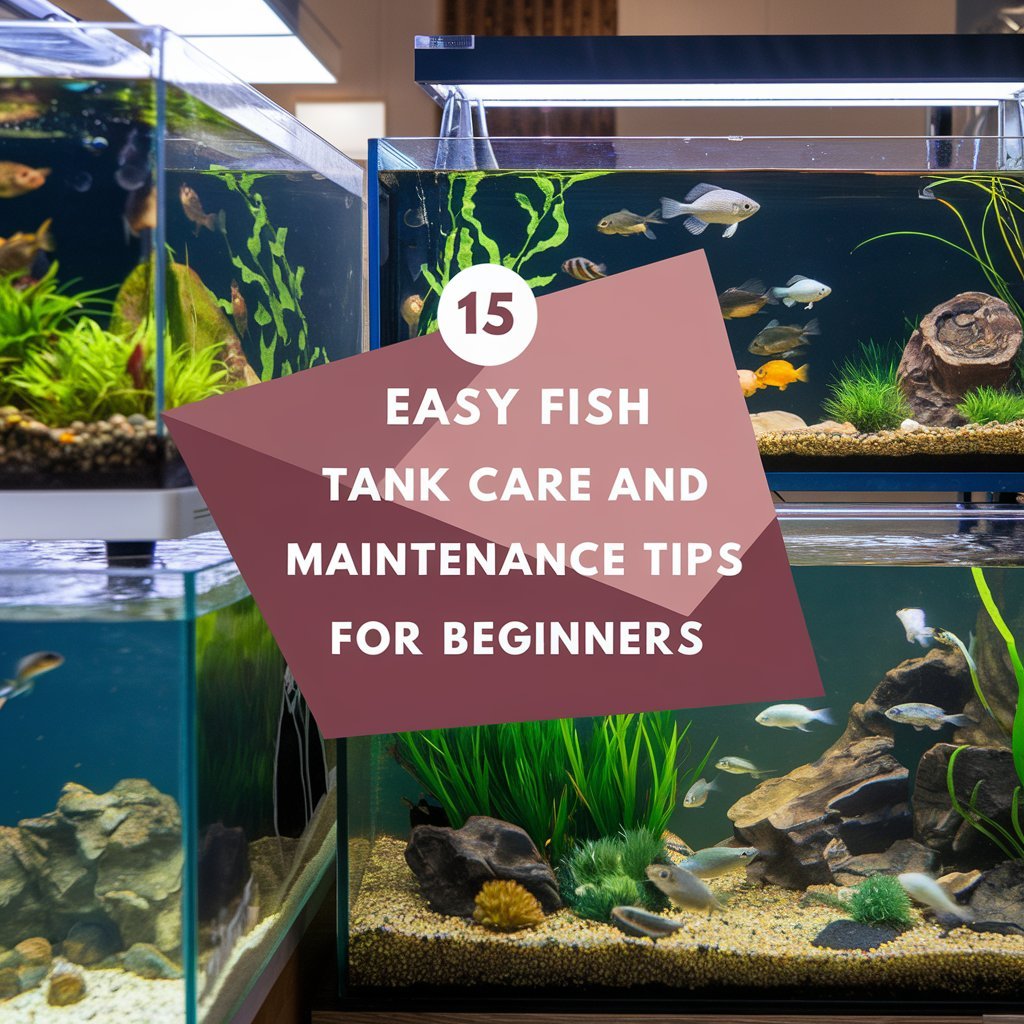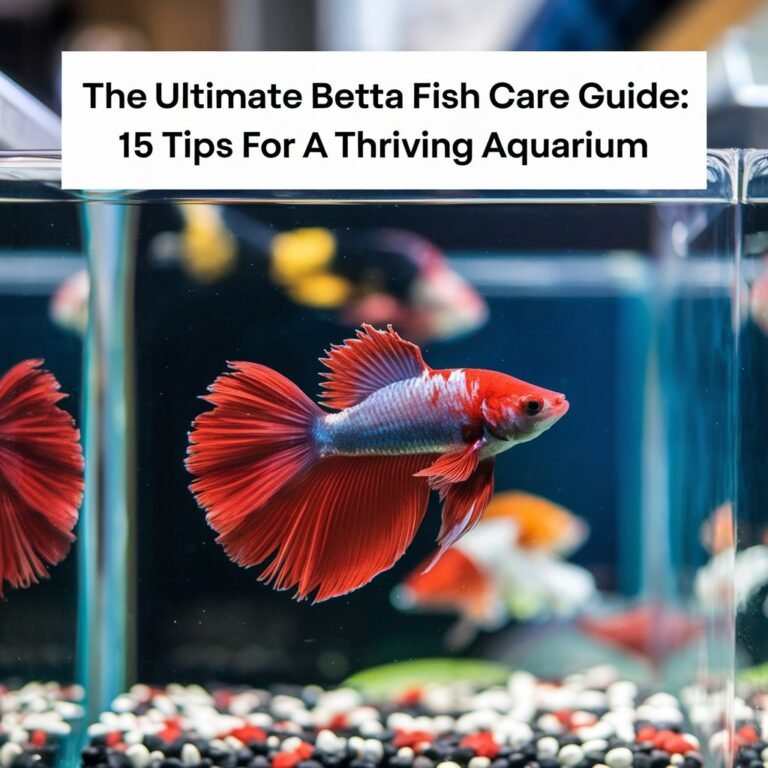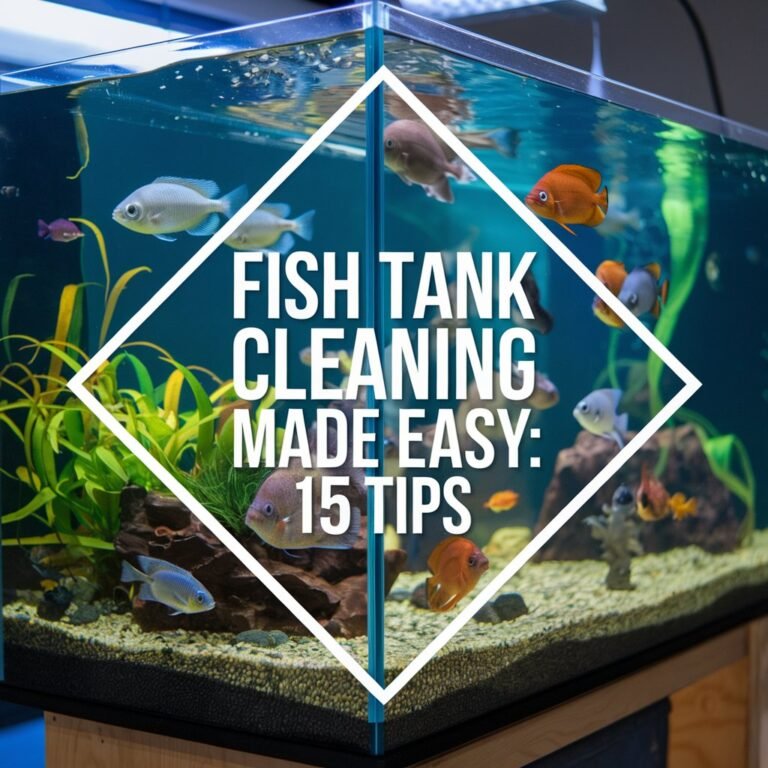15 Easy Fish Tank Care and Maintenance Tips for Beginners
As you set up your first fish tank, you’re probably enthusiastic to create a thriving aquatic environment. But, you’re also likely to have some questions about how to keep your fish healthy and happy. You’ve chosen the perfect tank and picked out some beautiful fish, but now it’s time to think about the long-term care and maintenance of your aquarium.
What are the essential tasks you need to perform on a daily, weekly, and monthly basis to keep your fish tank running smoothly? Let’s break down the key steps to guarantee your aquarium flourishes.
In A Nutshell
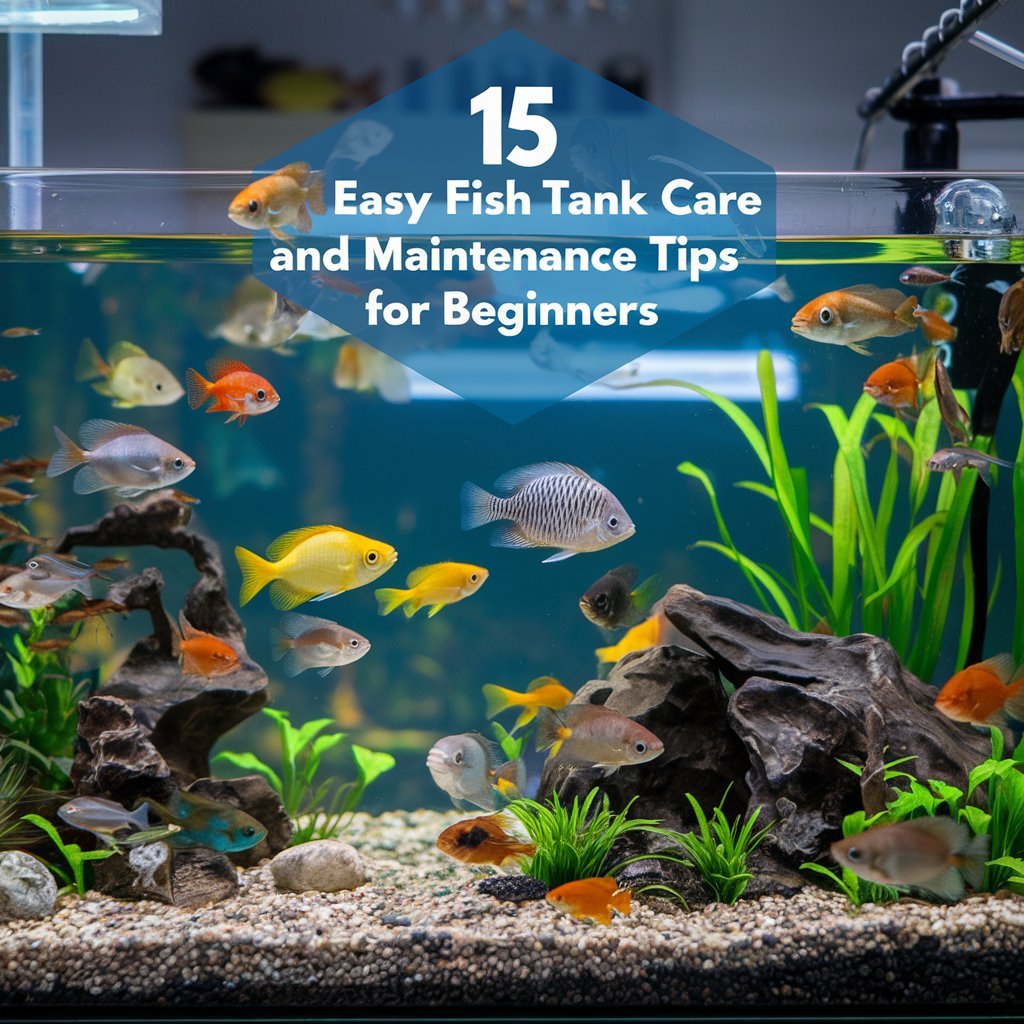
- Choose a suitable tank size and material that fits your space, with rectangular tanks ideal for beginners.
- Research and select fish species compatible in behavior, diet, and social requirements, ensuring enough space for growth.
- Regularly test for water parameters and perform partial water changes to maintain optimal water quality and aquatic life.
- Implement a balanced feeding schedule and provide high-quality fish food rich in protein, vitamins, and minerals.
- Establish a regular maintenance schedule for water changes, filter cleaning, and monitoring to maintain a healthy aquarium.
Choosing the Right Fish Tank
When it comes to setting up your aquatic environment, selecting the right fish tank is essential in relation to the well-being and longevity of your fish.
You’ll want to ponder the space where the tank will be placed and the type of aquarium style that suits your needs.
There are various fish tank materials to choose from, including glass, acrylic, and plastic. Glass tanks are a popular choice due to their durability and non-porous surface, which helps prevent bacterial growth.
Acrylic tanks, on the other hand, are lighter and more resistant to impact.
Aquarium styles also play a pivotal role in determining the right tank for you.
You can choose from a variety of styles, including rectangular, bow-front, and corner tanks.
Rectangular tanks are ideal for beginners, as they provide ample space for your fish to swim and are easy to maintain.
Bow-front tanks offer a unique viewing experience, while corner tanks are perfect for small spaces.
When selecting a tank, ponder the size, shape, and material to guarantee it meets your needs and provides a healthy environment for your fish.
Selecting Healthy Fish Species
In selecting a healthy fish species, you’re looking for more than just a visually appealing addition to your aquarium – you’re seeking a thriving, long-lived companion that will flourish in its environment.
To achieve this, consider the compatibility of different fish species in your tank. Some species are naturally aggressive or territorial, and housing them together can lead to stress and disease.
Research the behavior, diet, and social requirements of each species to guarantee they complement each other.
When selecting fish species, size considerations are also vital.
Mixing large and small fish can lead to predation or harassment. Similarly, housing slow-swimming fish with fast-swimming species can cause stress.
Ideally, choose species with similar swimming levels and size ranges to create a harmonious environment.
Additionally, consider the adult size of your fish when selecting species.
Some species may be small when purchased but grow substantially over time. Verify you have enough space in your tank to accommodate their adult size, and plan accordingly to avoid overcrowding and water quality issues.
Proper Water Quality Testing
A well-maintained aquarium relies on regular water quality testing to guarantee a healthy environment for your fish.
You’ll need to invest in a thorough water test kit that measures the key parameters of aquarium chemistry. These include ammonia, nitrite, nitrate, and pH levels. When performing water testing, it is vital to follow the manufacturer’s instructions carefully to obtain precise results.
When analyzing the test results, you’ll need to understand the ideal ranges for each parameter. For example, ammonia and nitrite levels should be zero, while nitrate levels should be below 10 ppm.
pH levels vary depending on the fish species, but most community fish thrive in a pH range of 6.5-8.5. By regularly monitoring these parameters, you can identify potential issues before they become major problems.
Water testing also helps you track the aquarium’s nitrogen cycle, which is vital for breaking down waste products. By staying on top of water testing, you can make informed decisions to maintain ideal aquarium chemistry and keep your fish healthy and thriving.
Regular water testing is a critical aspect of aquarium maintenance, and vital to make it a routine part of your fish-keeping schedule.
Regular Water Changes Matter
Regular water testing provides valuable insights into your aquarium’s chemistry, but it’s only half the battle.
To maintain peak water quality, you need to perform regular water changes. This process involves removing a portion of the aquarium water and replacing it with fresh, dechlorinated water that matches the tank’s temperature and chemistry.
The frequency of water changes depends on several factors, including the tank’s size, fish population, and biological filtration.
As a general rule, you should change 10-15% of the aquarium water weekly. However, if you notice a significant buildup of toxins or a decline in water quality, you may need to increase the change frequency.
Monitoring the tank’s water parameters and adjusting the water replacement schedule accordingly is crucial.
When performing water changes, make sure to use a gravel vacuum to remove debris and waste from the substrate.
Also, avoid over-filtering the water, as this can disrupt the tank’s biological balance.
Gravel and Decorations Setup
Carefully designing the substrate and decoration layout in your fish tank plays a significant role in maintaining ideal water flow and minimizing stress on the fish.
To achieve this, you’ll start by selecting the right type and amount of gravel. Generally, a 1-2 inch layer of gravel is recommended, as it allows for proper filtration and prevents debris from accumulating.
When choosing gravel color schemes, consider the natural environment of your fish to facilitate a seamless shift. Neutral colors like beige or gray work well for most species.
When placing decorations, consider decoration placement strategies that promote water circulation and provide hiding spots for your fish.
Avoid overcrowding the tank, as this can lead to water flow obstruction and stress on the fish. Instead, place decorations in a way that creates separate areas for swimming and hiding.
Consider using plants, rocks, or driftwood to create a natural environment. Make sure to leave enough space for your fish to swim freely and for you to easily clean the tank.
Fish Tank Cycling Process
You’ve now set the stage for your fish’s ideal environment by properly selecting and placing the gravel and decorations in the tank.
The next vital step is the fish tank cycling process, which establishes a balanced ecosystem for your aquatic life. Cycling involves the conversion of ammonia to nitrite and then to nitrate through a process called nitrogen conversion.
This process is essential, as ammonia and nitrite are toxic to fish.
There are two primary cycling methods: fishless cycling and fish-in cycling.
Fishless cycling is the recommended method, as it allows you to establish a stable ecosystem before introducing fish. This method involves adding ammonia to the tank and monitoring the nitrogen conversion process.
Fish-in cycling, on the other hand, involves adding fish to the tank and relying on their waste to initiate the cycling process. However, this method can be stressful for the fish and isn’t recommended.
During the cycling process, you should monitor the tank’s water parameters, including ammonia, nitrite, and nitrate levels.
This will help you understand the progress of the nitrogen conversion process and guarantee a healthy environment for your fish.
LED Lighting for Aquariums
While illuminating your aquatic environment, consider LED lighting as an ideal option for aquariums.
LEDs offer numerous benefits, including energy efficiency, longer lifespan, and reduced heat emission. This makes them a suitable choice for maintaining a stable environment for your aquatic life.
When selecting LED lighting for your aquarium, you’ll have various color options to choose from.
Different colors can promote plant growth, enhance fish visibility, or create a visually appealing display. For example, blue and violet LEDs can stimulate photosynthesis in aquatic plants, while white and yellow LEDs can highlight the natural colors of your fish.
Proper lighting placement is also vital for peak aquarium performance.
Place your LEDs above the aquarium, ideally 6-12 inches above the water surface. This allows for even light distribution and reduces the risk of algae growth. You can also use adjustable arms or clips to position your LEDs at an angle, creating a more natural light gradient.
Maintaining Ideal Water Temperature
Maintaining a stable water temperature is paramount for the health and well-being of your aquatic life.
Temperature fluctuations can be stressful for fish and other aquatic organisms, leading to weakened immune systems and increased susceptibility to disease.
To prevent this, making certain to monitor your tank’s water temperature closely is necessary. Invest in a high-quality thermometer that provides accurate readings. Thermometer accuracy is pivotal in maintaining a stable environment, so choose one that’s calibrated to ±0.1°C or ±0.2°F.
Most freshwater aquariums require temperatures between 20-25°C (68-77°F), while saltwater aquariums require temperatures between 22-28°C (72-82°F).
Avoid placing your tank near heating vents, radiators, or direct sunlight, as these can cause temperature fluctuations. You can also use a temperature controller or heater to maintain a stable temperature, especially in cold environments.
Regularly check your thermometer to confirm it’s working correctly, and adjust your tank’s temperature as needed. By maintaining a stable water temperature, you’ll create a healthy environment for your aquatic life to thrive.
Balanced Fish Feeding Schedule
A well-planned feeding schedule is crucial for the ideal health and well-being of your aquatic life.
As a beginner, it’s imperative to understand the importance of providing high-quality fish food that meets the nutritional needs of your fish. Fish Food Quality plays a significant role in maintaining the health and longevity of your aquatic life.
Look for commercial fish foods that are rich in protein, vitamins, and minerals.
Overfeeding Risks can be detrimental to the health of your fish and the overall aquarium ecosystem.
Overfeeding can lead to water pollution, reduced oxygen levels, and an increase in fish diseases. To avoid overfeeding, feed your fish only what they can consume within a few minutes, typically 2-3 times a day.
Also, consider the type of fish you have, as some species require more frequent or less frequent feeding.
Establishing a regular feeding schedule helps maintain a stable aquarium environment and guarantees your fish receive the necessary nutrients for peak growth and health.
Monitor your fish’s feeding behavior and adjust the feeding schedule accordingly to confirm you’re providing the best possible care for your aquatic life.
Aquarium Filter Maintenance Tips
Three key components of a well-functioning aquarium are the biological, mechanical, and chemical filtration systems, which work together to remove waste products and maintain ideal water quality.
As you perform routine aquarium maintenance, you’ll need to pay close attention to these filtration systems to verify they’re working effectively.
Regular filter cleaning is vital, and you’ll want to adopt the right methods for the type of filter you have. For mechanical filters, use a soft-bristled brush to gently remove debris and rinse with dechlorinated water.
Biological filters should be cleaned carefully, as over-cleaning can disrupt beneficial bacteria colonies. Use filter cleaning products or make your own solution by mixing dechlorinated water with a small amount of aquarium water.
To maintain peak filter performance, replace filter media according to the manufacturer’s guidelines.
Filter replacement timing typically ranges from 2-4 weeks for mechanical and chemical media, while biological media can last several months.
Regularly inspecting and maintaining your filters will help you catch potential issues before they affect water quality.
Keep a maintenance log to track filter replacements and cleaning schedules to guarantee your aquarium’s filtration system continues to run smoothly and efficiently.
Controlling Algae Growth Naturally
Controlling algae growth naturally requires a multifaceted approach that involves understanding the underlying causes of algae blooms and implementing targeted strategies to prevent them.
Algae causes in aquariums can be attributed to an imbalance of nutrients, such as excess phosphorus and nitrogen, inadequate water circulation, and inefficient lighting systems.
These factors can stimulate the growth of algae, leading to unsightly blooms that can harm your fish and compromise water quality.
To control algae growth naturally, you can implement several measures.
One effective approach is to maintain ideal water parameters, such as pH, temperature, and nutrient levels.
Regular water changes, usually 10-20% every week, can also help remove excess nutrients that contribute to algae growth.
Additionally, you can employ natural remedies like introducing algae-eating fish, such as plecos or otocinclus, or using algae-absorbing media, like activated carbon or zeolite.
Moreover, adjusting your lighting schedule to simulate natural day-night cycles can also help regulate algae growth.
Monitoring Fish Health Daily
Monitoring your fish’s health daily is crucial for identifying potential issues before they escalate into serious problems.
By performing daily observations, you’ll be able to detect even the slightest changes in your fish’s behavior, appetite, or physical condition. Start by observing your fish’s behavior, noting any unusual swimming patterns, lethargy, or erratic movements.
Check if they’re eating normally and if their color, fins, or scales appear healthy. Pay attention to your fish’s respiratory rate, as labored breathing can indicate stress or disease.
Also, inspect their eyes, ensuring they’re clear and free of cloudiness or bulging. Note any changes in their posture or body shape, as these can be indicative of internal issues.
By making these daily observations, you’ll become familiar with your fish’s normal behavior and be able to quickly identify any deviations. Record your observations to track changes over time and facilitate early detection of potential health issues.
This proactive approach will enable you to take prompt action, reducing the risk of disease and promoting a healthy environment for your fish. Regular monitoring will help you identify problems before they become severe.
Quarantine Tank for Sick Fish
When dealing with sick fish, having a quarantine tank in place is vital to prevent the spread of disease and provide a safe environment for treatment.
Quarantine procedures are designed to isolate and care for fish exhibiting sick fish symptoms such as labored breathing, erratic swimming, or visible lesions.
Your quarantine tank should be a separate tank, not just a partition in the main tank, and it must have its own equipment and biological filter to prevent the transfer of pathogens.
Maintain a separate set of equipment, such as nets, heaters, and testing kits, specifically for the quarantine tank.
Avoid using these in your main tank to minimize cross-contamination.
Keep your quarantine tank small (less than 20 gallons) and lightly stocked, making it easier to control water parameters.
Set the tank’s temperature and water chemistry according to the requirements of the isolated species, but away from extreme changes.
Maintaining precise records of the treatment, dosing medications and any observations during quarantine can greatly improve treatment success and save time when consulting fish health professionals for assistance.
Fish Tank Maintenance Schedule
A meticulously planned fish tank maintenance schedule is the cornerstone of a thriving aquatic ecosystem, allowing you to stay on top of water quality, equipment upkeep, and biological balance.
This schedule involves creating fish tank checklists to track your maintenance activities, ensuring you never miss a vital task.
You’ll need to perform daily, weekly, bi-weekly, and monthly tasks.
Daily reminders can include monitoring water temperature, pH, and ammonia levels.
Weekly tasks involve changing 10-20% of the tank water, cleaning the gravel and decorations, and inspecting equipment.
Bi-weekly tasks include checking and replacing filter media, and inspecting the tank’s lid and seals for any damage.
Monthly tasks involve cleaning the glass walls, replacing the activated carbon, and testing the water for nitrite and nitrate levels.
To create a maintenance schedule that works for you, start by tracking your activities and identifying patterns.
Then, set reminders on your calendar or use a fish-keeping app to stay on track.
Avoiding Common Beginner Mistakes
Common pitfalls can lead to devastating consequences in fish-keeping, so it’s imperative to be aware of them before setting up your aquarium.
As a beginner, you’re likely to make mistakes, but recognizing these errors can save your fish’s lives. One of the most common mistakes is overfeeding, which leads to ammonia spikes and poor water quality.
Researching the dietary needs of your fish is pivotal and avoiding overfeeding is necessary.
Another mistake is neglecting regular water changes. Many beginners overlook this pivotal task, which can lead to the buildup of toxins and stress on your fish.
Regular water changes help maintain ideal water parameters and prevent disease outbreaks.
You should also avoid overcrowding your tank, as this can lead to increased competition for resources and stress on your fish.
Frequently Asked Questions
Can You Have Fish in a Bowl Without a Filter System?
You can keep fish in a bowl without a filter, but it’s vital to prioritize bowl safety and maintain good water quality through regular water changes and monitoring to prevent water parameter fluctuations.
Do Goldfish Make Good First Pets for Children to Care?
You’ll teach your child pet responsibility by involving them in goldfish care. Goldfish can thrive with proper attention, making them a suitable first pet, promoting child involvement and education on aquatic life and its needs.
Is Distilled Water Suitable for Use in Fish Tanks?
When considering distilled water for your tank, you’re potentially disrupting water quality and mineral balance, as it lacks essential minerals and electrolytes, which are crucial for maintaining healthy aquatic life and stable ecosystem conditions.
How Do I Know When It’s Safe for New Fish Additions?
You’ll know it’s safe for new fish additions when your tank’s stock levels are stable and water parameters, such as ammonia, nitrite, and nitrate levels, are within acceptable ranges for the specific fish species you’re introducing.
Are All Types of Gravel Safe for Use in Aquariums?
When selecting gravel, you’ll find varying textures and colors, but not all are safe for aquarium use. Avoid gravel with sharp edges or those containing copper, as they can harm fish, and opt for inert, rounded options instead.
FInal Verdict
By following these 15 easy fish tank care and maintenance tips, you’ll be well on your way to creating a thriving aquatic environment. Remember to stay vigilant and adapt to changes in your tank’s ecosystem.
Regularly monitoring water quality, fish health, and making adjustments as needed will guarantee a balanced environment. With dedication and attention to detail, you’ll enjoy a beautiful and healthy aquarium that brings you joy for years to come.
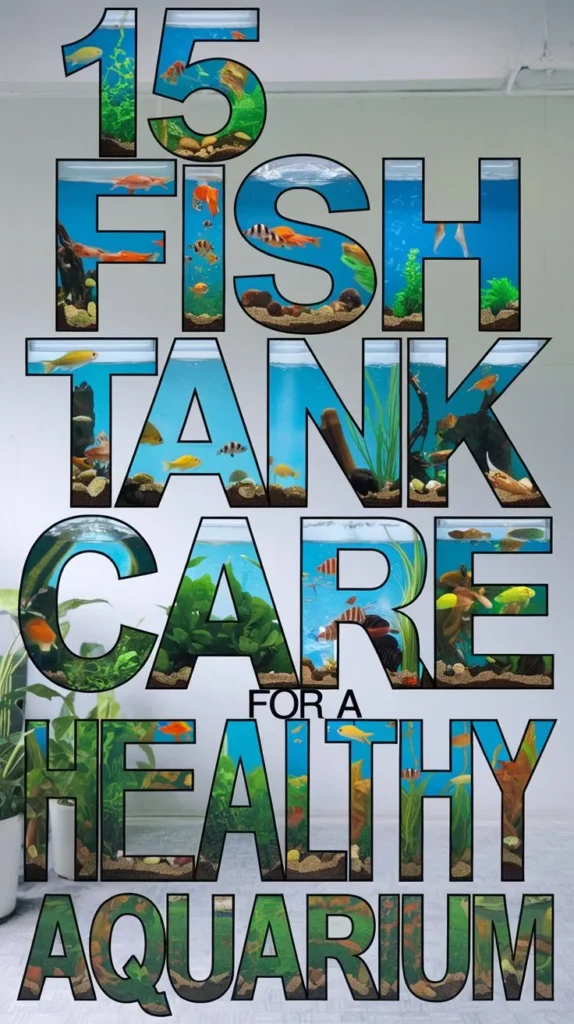
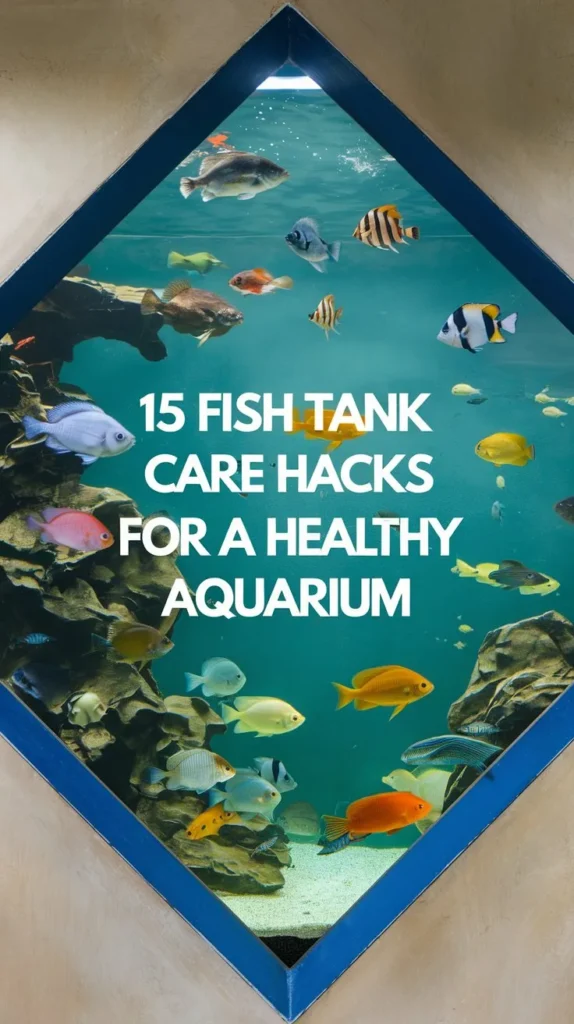


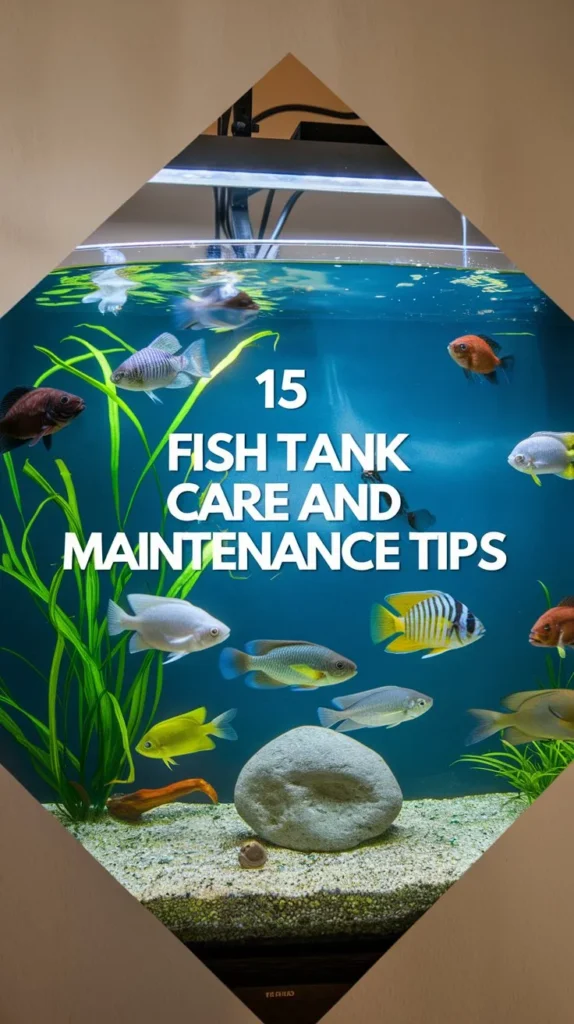

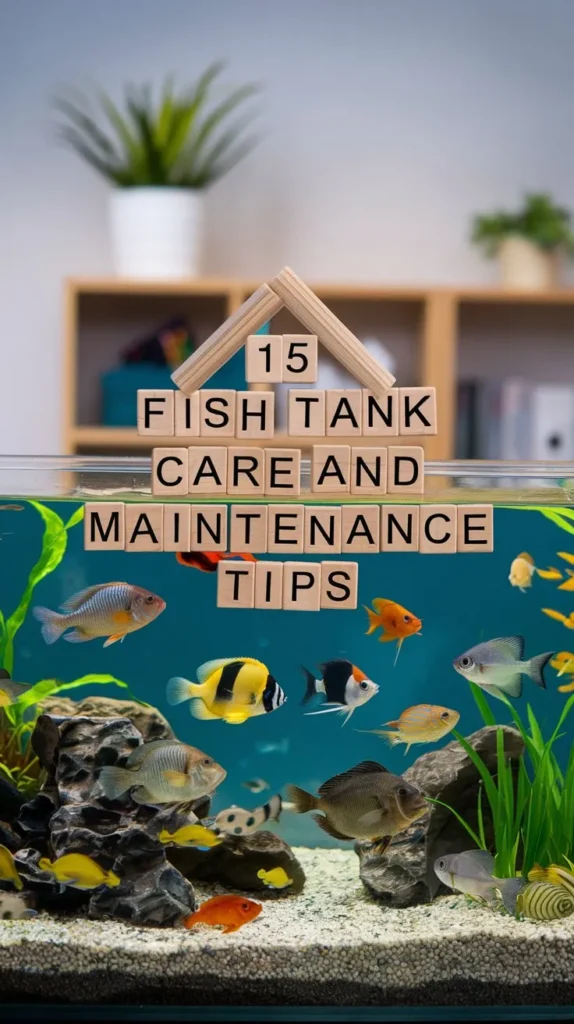
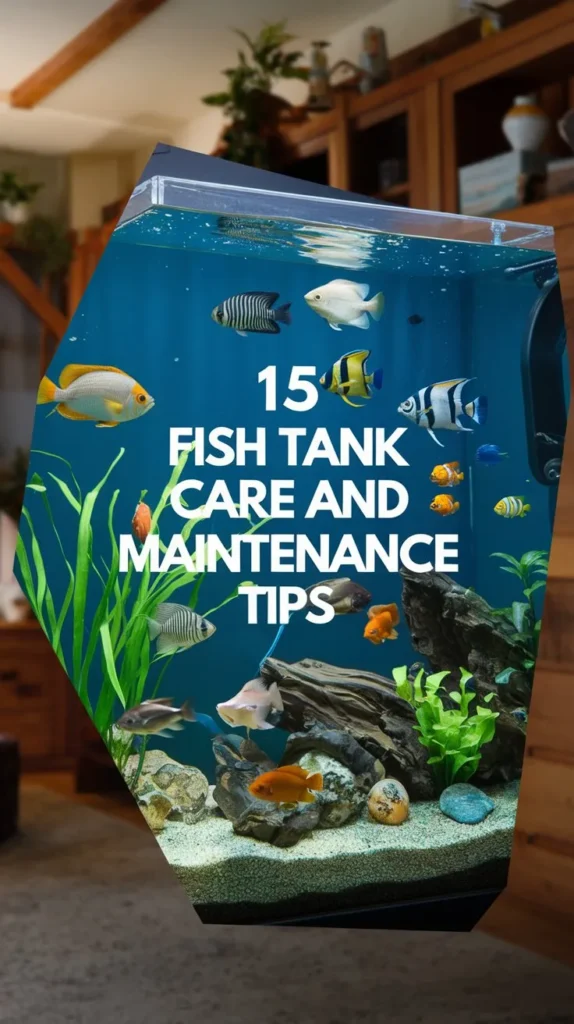

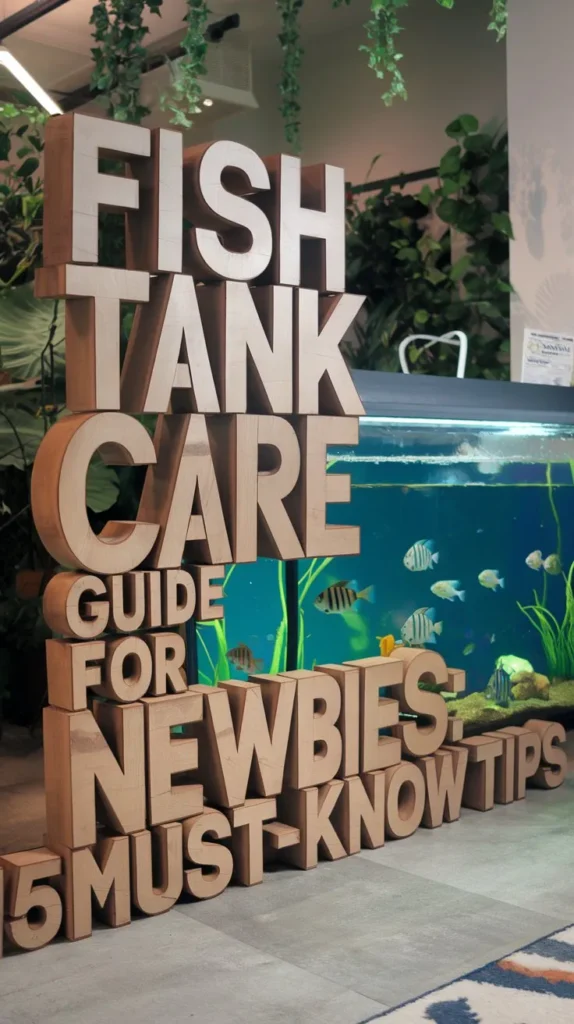

Hello, I’m Aria Cooper, the heart and soul behind Swimmy Buddies. As a devoted fish aficionado, I share my aquatic adventures and expertise to inspire your own underwater explorations. 🐠🌊

